Bryna Turner’s ’12 “Bull in a China Shop” Depicts Life of Mary Woolley
Playwright Bryna Turner ’12 discusses her critically acclaimed play inspired by the letters of Mary Woolley and Jeannette Marks
In February, Bryna Turner ’12 made her off-Broadway debut as a professional playwright. Her play Bull in a China Shop—which depicts the lives, loves, and political and romantic struggles of Mary Woolley, president of Mount Holyoke from 1901 to 1937, and her partner, Professor Jeannette Marks—was a resounding success, garnering sold-out shows, a glowing review in the New York Times, and four stars from TimeOut New York, which noted that Turner “neatly dispenses with two hoary shibboleths: that history is perforce dry, and feminists unfunny.” Produced by Lincoln Center, that triumph has opened new doors for Turner: Samuel French has signed on to publish the play, and Lincoln Center has offered Turner a commission for her next play.
Turner’s attention was first drawn to Woolley and Marks by a Mount Holyoke Archives and Special Collections Instagram post that announced a 2015 exhibit. In collaboration with student workers, Head of Archives and Special Collections Leslie Fields had painstakingly compiled an online exhibit to accompany a physical one documenting the two women’s lives—and a seminal episode in Mount Holyoke’s history—through photographs and letters.
“The archives are available to all, and they are much more than a storage closet for old stuff,” Fields says. “Seeing creative use of the materials, beyond scholarly papers and research, is especially exciting.”
For Turner the discovery of the materials was an artistic gold mine—and in the fall her play will return to the campus where its subjects worked, argued, and collaborated, in a production directed by Frances Perkins Scholar Molly Paige ’18.
According to Visiting Lecturer in Theatre Arts Noah Tuleja, director of the College’s Rooke Theatre, the play committee’s decision this season was an easy one.
“It’s rare that I . . . read a play from cover to cover in one sitting,” he says. “But this one grabbed me right from the start. It’s clever, it has strong characters, it’s funny, it has a nice, sort of modern, feel, but it doesn’t feel thin. It’s a great piece of writing by a playwright who has strong craft, a strong point of view, and something to say. And it’s about Mount Holyoke. It was a perfect fit.”
With the new play, Turner joins a tradition of alumnae playwrights—notably Wendy Wasserstein ’71, who also wrote about Mount Holyoke, and Suzan-Lori Parks ’85, who was the first African American woman to receive the Pulitzer Prize for Drama. Over the spring the Alumnae Quarterly caught up with Turner for a conversation about her first attempts at playwriting, her creative process, and the success of Bull in a China Shop.
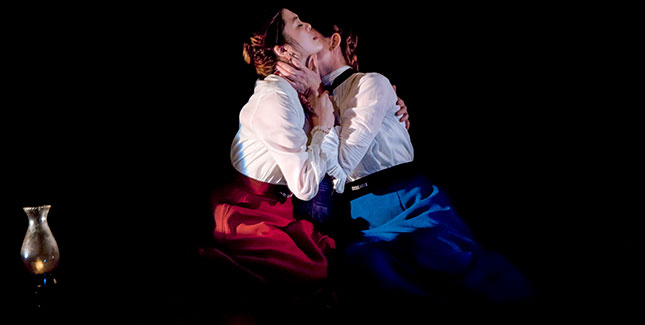
Ruibo Qian and Enid Graham as Marks and Woolley in a scene from Bull in a China Shop at New York’s Lincoln Center in March.
Alumnae Quarterly: Was theatre part of your experience at Mount Holyoke?
Bryna Turner: I was a theatre major, which is why this story spoke to me, because Jeannette Marks actually created the theatre department! She started it with a playwriting class. And then it evolved from a playwriting class in the attic of the President’s House to students doing plays, and I think they called it the Rooke Lab shortly after. So it was incredible to discover this story, not only about two women who had such a beautiful love story but also two women who shaped the institution that shaped me one hundred years later.
AQ: Did you write plays when you were in college?
Turner: My senior year I tried my hand at directing and got a lot of feedback that people didn’t really understand what I was trying to say. It was a French absurdist play, and I was like, “What do you mean you don’t understand it?!” [laughter] But then, because of that experience, I started asking myself: “Well, what are you trying to say?” The following semester, professor Brooke O’Harra was directing Wendy Wasserstein’s Uncommon Women and Others, and I decided to respond to the play from the perspective of my class, 2012. The department allowed me to produce my play right after the original, so we used the same set, and our show started at 11:00 p.m., right when Wendy’s finished. It was an incredible learning experience. And it was the first time that I got to see a play that I had written on a stage, with actors doing it. I realized, this is what I want to do.
I loved the gorgeous details in their love story: President Woolley climbing three flights of stairs each night to kiss Miss Marks good night when they both lived in Brigham Hall. Bryna Turner ’12
AQ: What came next?
Turner: I moved to New York, with a lot of bravery and optimism [laughter], and then quickly learned that I wasn’t equipped for much in the way of practical things. I didn’t know anyone in the city, and there was a big gap between what I thought I was going to be able to do and what I ended up being able to do. But someone I went to Mount Holyoke with happened to be working at the box office of The Public Theater, and she got me a job there. While the phone wasn’t ringing I was scribbling things down. I was very sure I didn’t want a master’s degree, but I realized that I wanted to dedicate more time to writing and [that] it was going to require taking that extra step. So, I applied for an MFA, and I started at Rutgers University in New Jersey.
AQ: Why did you resist the idea of getting a master’s?
Turner: I think I had this idea that if I spent my whole life in school, what would I write about, except for school? I needed lived experience. Which is all true. And now I’ve written this play about Mount Holyoke! [laughter] But there’s some lived experience in there. I think I also had this grand idea of entering the real world upon graduation—that the maturation and sophistication would naturally occur in both my life and my work. But it turns out that to become a better writer, you really have to write. A lot.
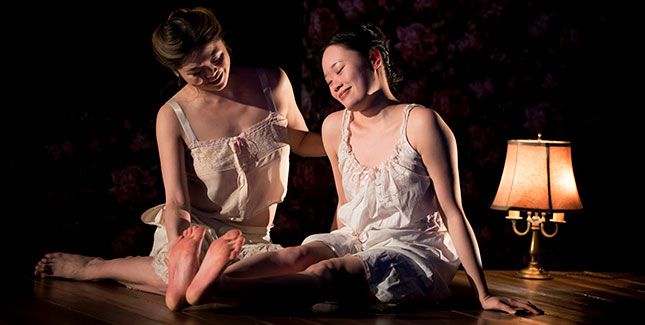
Ruibo Qian and Michele Selene Ang in a scene from Bull in a China Shop at New York’s Lincoln Center in March.
AQ: How did you first discover the story of Woolley and Marks?
Turner: I follow Mount Holyoke’s Archives on Instagram, and a few years ago they posted about Mary Woolley and Jeannette Marks and linked to a digital exhibit about their lives and letters. I was totally blown away by their story. Not only was it innately dramatic—a professor falling in love with her student, bringing her along to Mount Holyoke and quickly setting her up to head the English department despite her lack of experience, living together in the President’s House—but it was also incredibly moving to me to see this story of these women who loved each other for forty years against all odds. I loved the gorgeous details in their love story: President Woolley climbing three flights of stairs each night to kiss Miss Marks good night when they both lived in Brigham Hall—Woolley in the president’s suite on the first floor, and Marks on the top floor in faculty housing. Students lived on the floors in between! I immediately wanted to write a play about them. But I tried several times, and it was horribly boring. Dreadful fake historical nonsense. It took some tectonic shifts in my own life to really free the story for me.
AQ: Had you steeped yourself in their letters? Or how did you approach generating those characters?
Turner: I didn’t dive too deeply into the letters. Sometimes getting mired in too much detail can overwhelm me, and I lose track of the story I’m trying to tell. I didn’t quote them directly, but [I] got such a sense of their inner life from their letters, and [from] some of Marks’ writings and Woolley’s speeches. Marks jumps off the page as a turbulent, moody writer, and Woolley is almost effervescent with optimism. There’s a letter in my play, but it’s completely my own. I’m so indebted to the Archives—especially for all that they’ve digitized! Everyone involved in the production saw the online exhibit. The photos of Marks and Woolley sat with me for months as I worked, and the set designer was amazed by how many photos of the school throughout the ages he was able to find. Plus, [Lincoln Center’s] LCT3 sent out an email to everyone who attended the production to check out the digital exhibit. It’s so lovely to think that so many people got to experience this beautiful story.
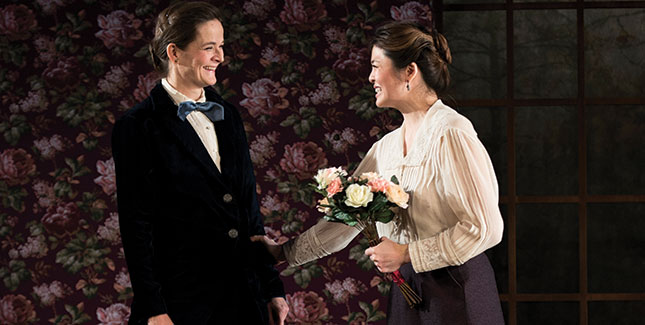
Enid Graham and Ruibo Qian as Woolley and Marks in a scene from Bull in a China Shop at New York’s Lincoln Center in March.
AQ: Virginia Woolf’s writing is featured in your play. Do you consider her an influence?
Turner: I do. And I think she came in, in a second or third draft. Someone was asking me, “What does Marks teach? Is she a good teacher?” And so I was trying to imagine [who] Marks would be influenced by, what was moving [her], and Virginia Woolf just came to mind, because she was doing something so incredible with [her novel] Orlando. She wrote it in the twenties, and it was this incredible exploration of gender and sexuality, but it was disguised with humorous biography, so no one totally knew what to do with it. I think if people had been able to figure it out at the time it would have been censored. But because it was humorous and so strange—it was almost like science fiction—it passed under the radar. And it was this incredible critique of her society at a time, in the twenties, when people had sort of just realized that all these Victorian, flowery, female friendships that were going on in these “Boston marriages” were perhaps not so innocent in the way they thought they were, because they had just discovered that women might have a sexuality of their own. Before that they didn’t think that was possible. And it was just something I was thinking a lot about in regards to these women and what they were trying to do—bucking these social conventions. But then also it’s doing the same thing in genre that this play is trying to do, which is going through a great amount of time very quickly. And it’s a love story, it’s a biography, it’s all of these things. And it’s strangely funny even though it’s also kind of sad—and it’s a social critique. It’s trying to do a lot. So Virginia Woolf felt like a perfect guide for this play.
AQ: You’ve talked about how you wanted to cast people of color in this play. Why was that important to you?
Turner: As a queer person, I’ve been left out of a lot of narratives and not included in a lot of history. That’s something I was trying to correct in telling this story—to include women of color felt like the natural and right choice. I feel like it’s something that happens often, where people’s imagination suddenly becomes limited when it comes to race, class, gender. The same sort of lines that come up in the real world come up again in art, and people limit themselves in the same way and sort of restructure the world in the only way they see it patterned. That was something I really wanted to challenge in this play and not use history as an excuse to leave women of color out again.
As a queer person, I’ve been left out of a lot of narratives and not included in a lot of history.Bryna Turner ’12
AQ: You were deeply involved in the production in New York—what was it like for you to watch rehearsals?
Turner: It was incredible. This was my first professional pro-
duction. I was working with a director I’d worked with before, Lee Sunday Evans, so it was wonderful to be in the room with her and then all of these incredible actors, and just to see how they engaged with the work. They brought so much of their own imagination and personality to it. The set was this beautiful, sort of abstracted, slightly raked wooden floor, with a beautiful floral wallpaper and a window that at one point opens up for a flashback scene. And the costumes were all historically accurate but in slightly brighter colors. It was amazing to think that here was this idea that I’d had on a day when I was sad, writing in a café, and now here’s this room full of people spending eight hours a day working on this thing and bringing it to life.
AQ: Will you be participating in the MHC production?
Turner: I hope so! It’s going to be directed by a student, and I think she’s going to be in New York this summer, so we’ll meet up and chat. And then I’m hoping to make it back at least to see it, if not to participate in some way.
—By Abe Loomis
Abe Loomis is a freelance writer based in western Massachusetts. Contact him at abe.loomis@gmail.com.
—Production photos by Jenny Anderson, courtesy Lincoln Center Theater
This article appeared as “Purposeful Anachronisms” in the summer 2017 issue of the Alumnae Quarterly.
July 14, 2017


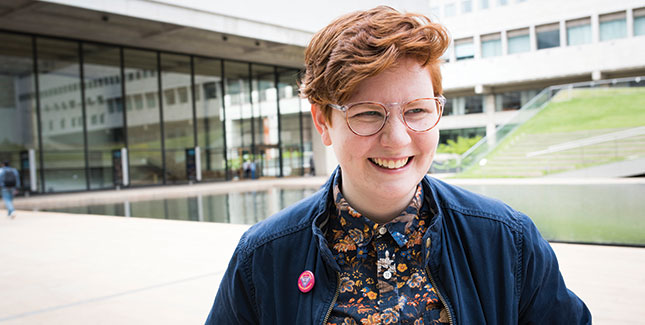






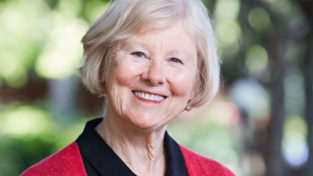

What about mentioning Coco Klein Mack ’60??? Her play,Seven, has been a great success.